
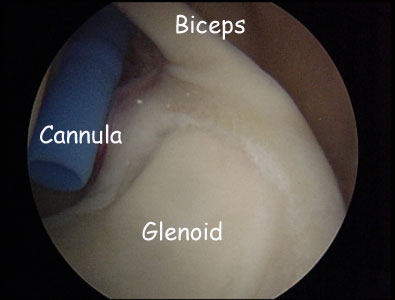
Risks
All surgical procedures have some element of risk attached.
The risks outlined below are the most common or most significant that have been reported.
Continued pain / weakness: 5%
In the majority of cases all the pain is removed by surgery however occasionally a small amount of pain persists. This is usually mild but very rarely (less than 1%) can be the same or worse than prior to surgery.
Infection: less than 0.1%
If an infection does occur it is usually superficial in the wounds and is easily treated with antibiotics.
Rarely the infection can be deep inside the joint and this requires surgery to wash the joint out.
Nerve damage: less than 0.1%
The axillary nerve runs close to the bottom of the joint and, if damaged causes weakness of the deltoid muscle and difficulty in raising the arm.
Stiffness: 1%
The shoulder will often become stiff after surgery and this usually settles with physiotherapy. Rarely the shoulder can become very stiff and require manipulation or arthroscopic release surgery.
Indications for operation
Anaesthetic
General Anaesthetic with an interscalene block (Fully asleep with a local anaesthetic injection into the side of the neck will numb the nerves to the shoulder for post-operative pain relief)
Operation type
Arthroscopic
Incisions
3 ½ cm incisions will be made in the shoulder, one to the back and two at the front of the shoulder.
Procedure
The gleno-humeral (shoulder) joint will be inspected first followed by the subacromial bursa and the rotator cuff. The area where the labrum has become detached will be freshened up and the labrum reattached to the glenoid using 2 or 3 sutures secured to the bone using “suture anchors”. If it is not possible to do this the damaged tissue will be removed.
Images
Damaged labrum
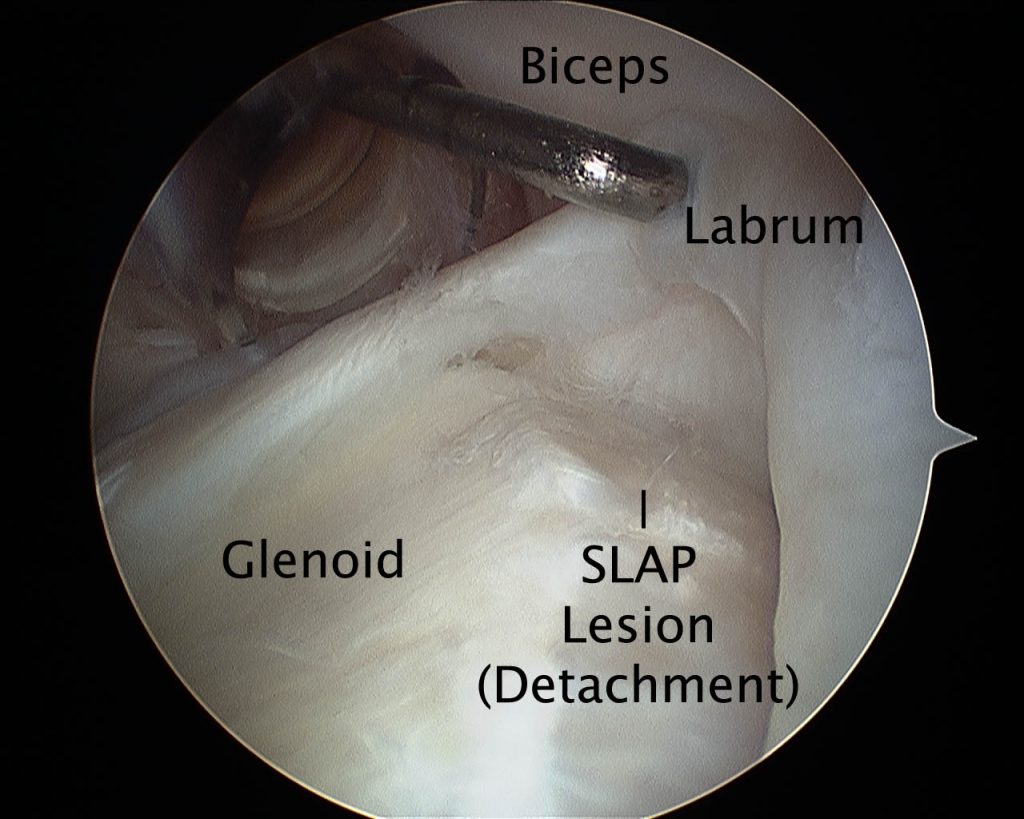
Passing sutures
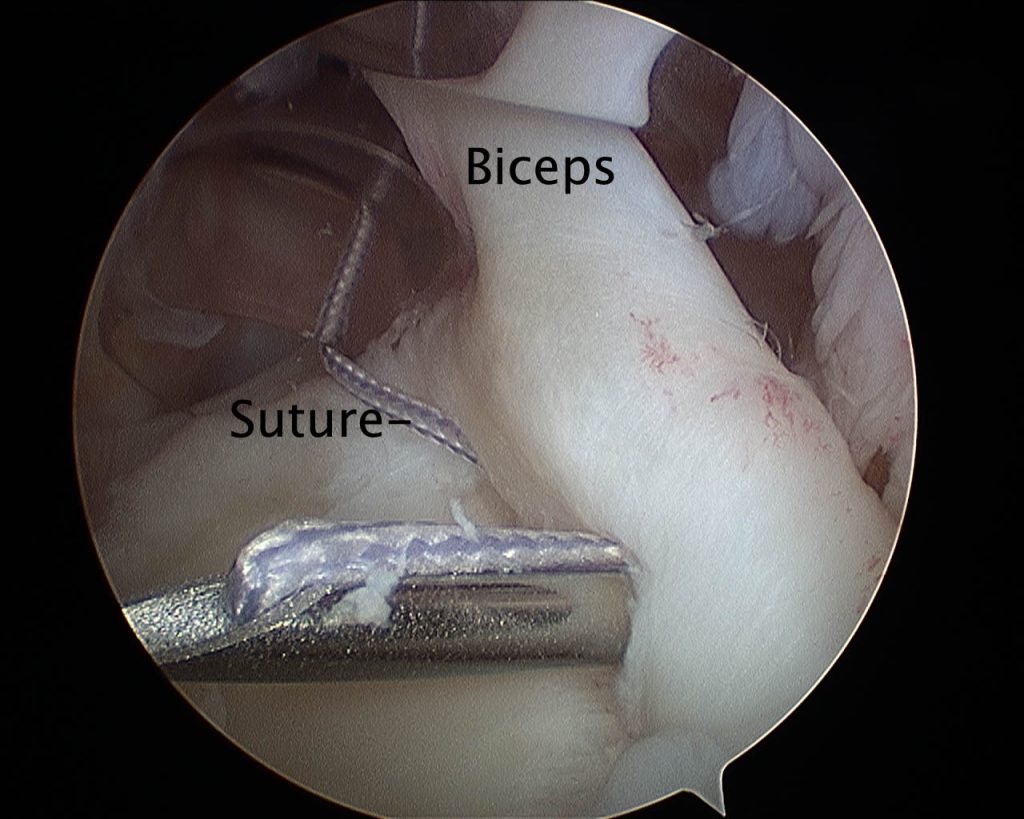
Sutures in place
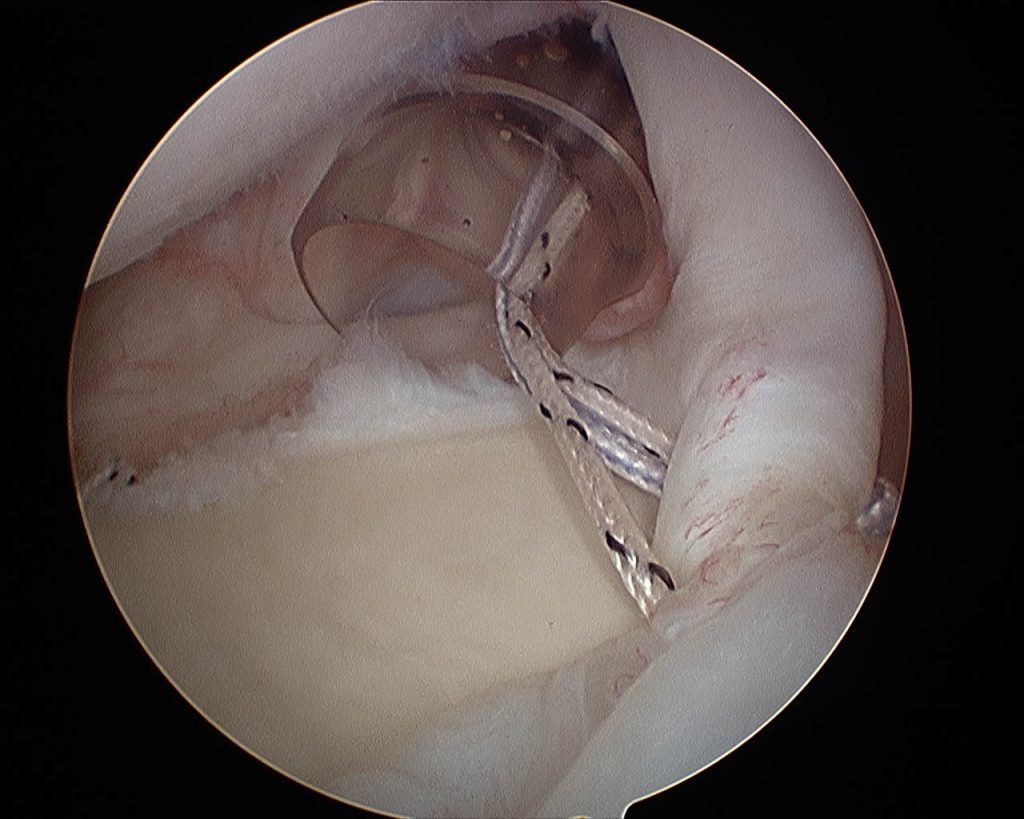
Completed repair
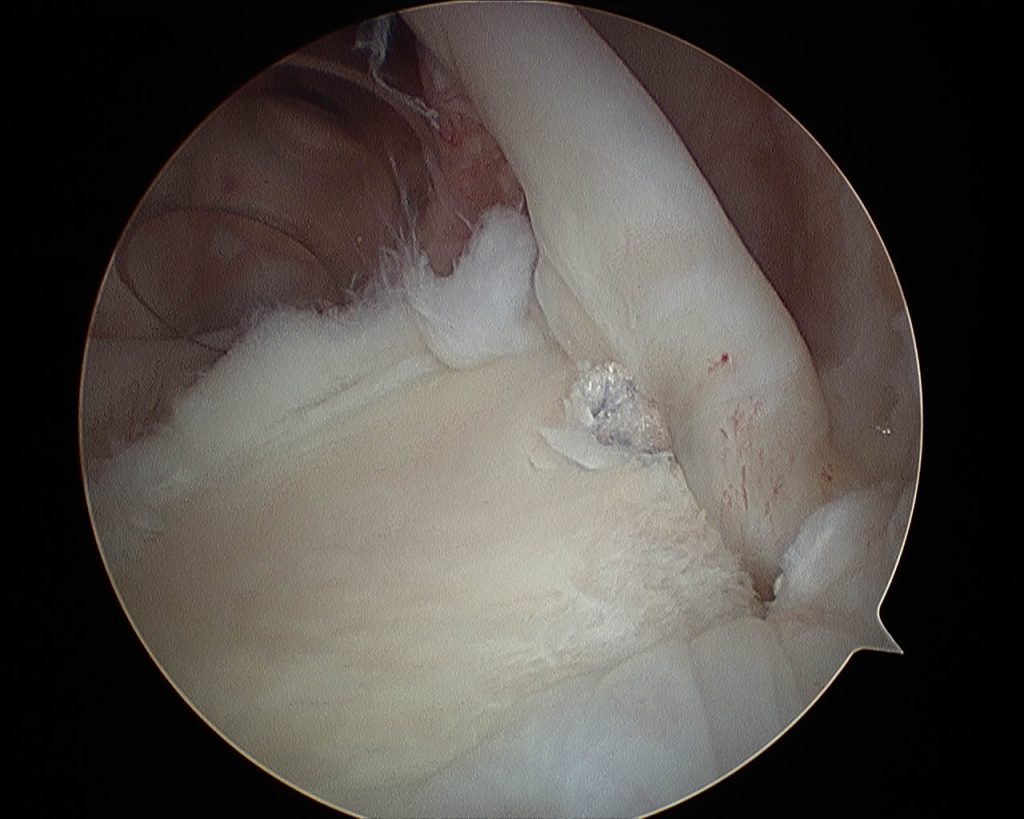
Wound Closure
Small butterfly paper stitches will be used to close the wounds.
Dressings
Elastoplast dressings will be placed over the top of the paper stitches and an adhesive bandage over the top of this.
Immediate aftercare
A sling will be placed on the arm and it may feel numb for the rest of the day. You can go home when you feel comfortable and will be given instructions on what to do next.